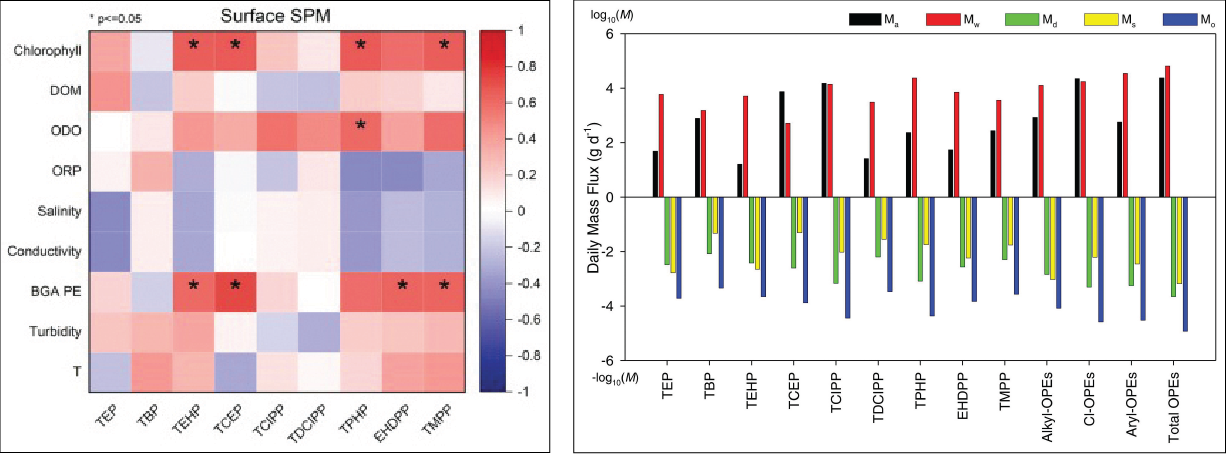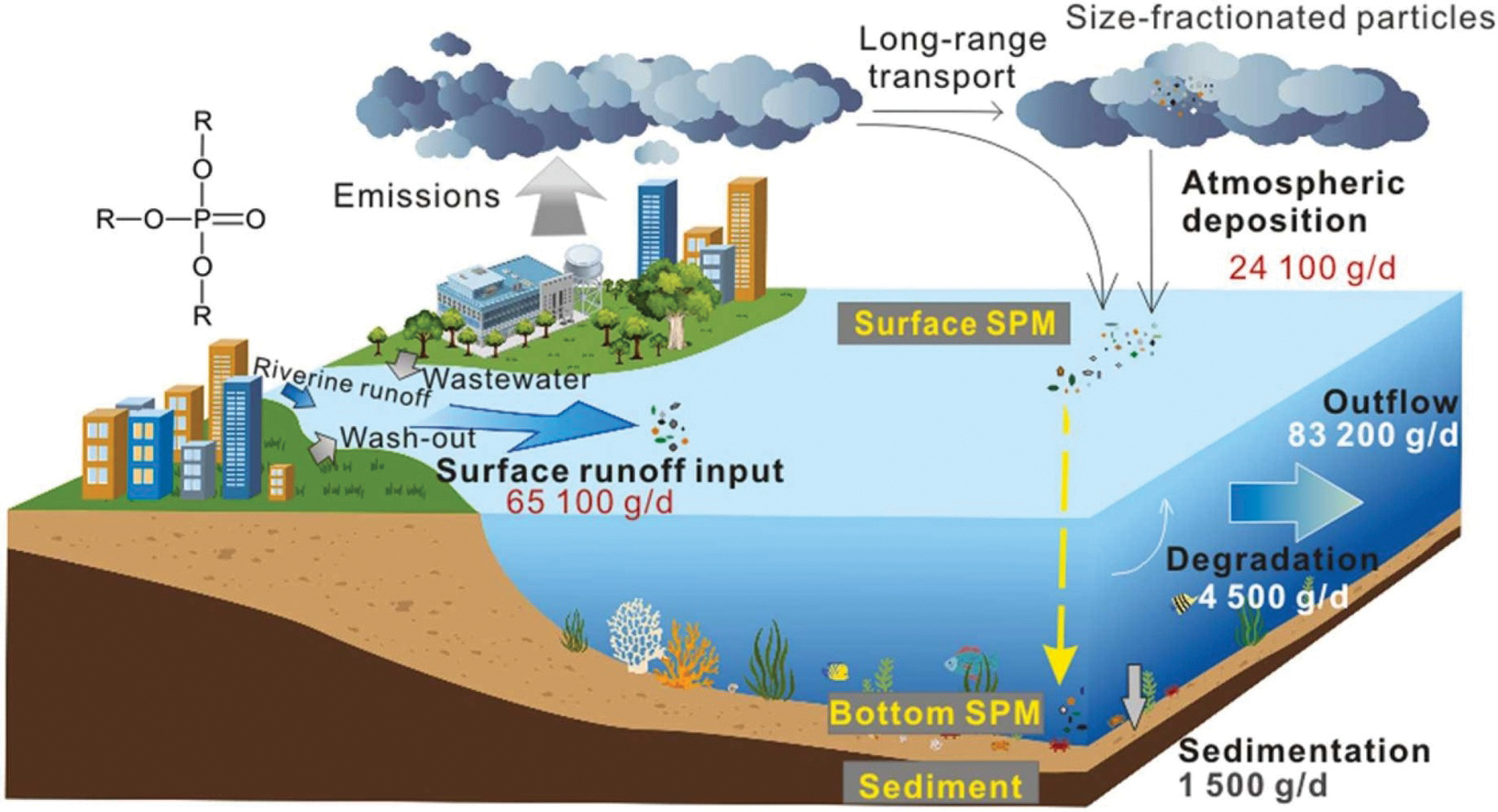Involved Members: Prof. Paul Kwan Sing LAM, Prof. Kenneth Mei Yee LEUNG, Dr. Phoebe Yuefei RUAN
Most organophosphate esters (OPEs) enter the marine environment through atmospheric deposition and surface runoff. In this study, samples of size-segregated atmospheric particles, suspended particulate matter in seawater, and sediments in the Pearl River Estuary (PRE) were collected and analyzed for OPEs. Concentrations of atmospheric particulate OPEs showed a decreasing trend with increasing offshore distance in the PRE. Sediment in the region close to Modaomen outlet was subject to relatively high OPE concentrations. The input and environmental fate of particulate OPEs are dependent on sources, particulate media, and chemical species. The present study calls for more concern on anthropogenic impact on the estuary.

Reference:
Lao, J.Y., Wu, R.B., Cui, Y.S., Zhou, S.W., Ruan, Y.F., Leung, K.M.Y., Wu, J.X., Zeng, E.Y., Lam, P.K.S. (2022). Significant Input of Organophosphate Esters Through Particle-Mediated Transport into the Pearl River Estuary, China. Journal of Hazardous Materials, 438, 129486. (impact factor 14.224)
